
There’s only one way in and out of Idalia, so locating it is an easy affair; it’s a 115km drive southwest of Blackall in central Queensland.
Now, before you attempt to visit the park you need to be confident in remote-area travel and camping, and be self-sufficient in every regard as there is no mobile service out here and seeing another camper just may not happen at all. The dirt drive towards the park sees you skirt around the eastern side through large pastoral stations including Collabara Station, which is now Southern Idalia, until you enter the park.

Jump back to 1919, when Herbert Golding decided it was a good move to purchase 45,000ha here and move his wife and three children to this harsh environment to create a lifestyle. The early years saw them survive in a tin hut as they struggled through droughts, wild dogs, termites eating the fences and then the infestation of the prickly pear.
In 1924 Herbert moved away during the severe slump in cattle prices, but returned early in 1930 after he managed to secure loans for a ‘proper’ home, more stock, a vehicle and miles of netting to keep the wild dogs away from his stock. Unfortunately in 1933 a rogue bull knocked him off his horse during mustering and he died from his injuries; his son George took over until 1940 when Collabara was sold.
In recent times (1990) Idalia NP was formed by combining two pastoral leases – Collabara and Old Idalia – as they were originally part of the huge Terrick Terrick property of the Blackall region.
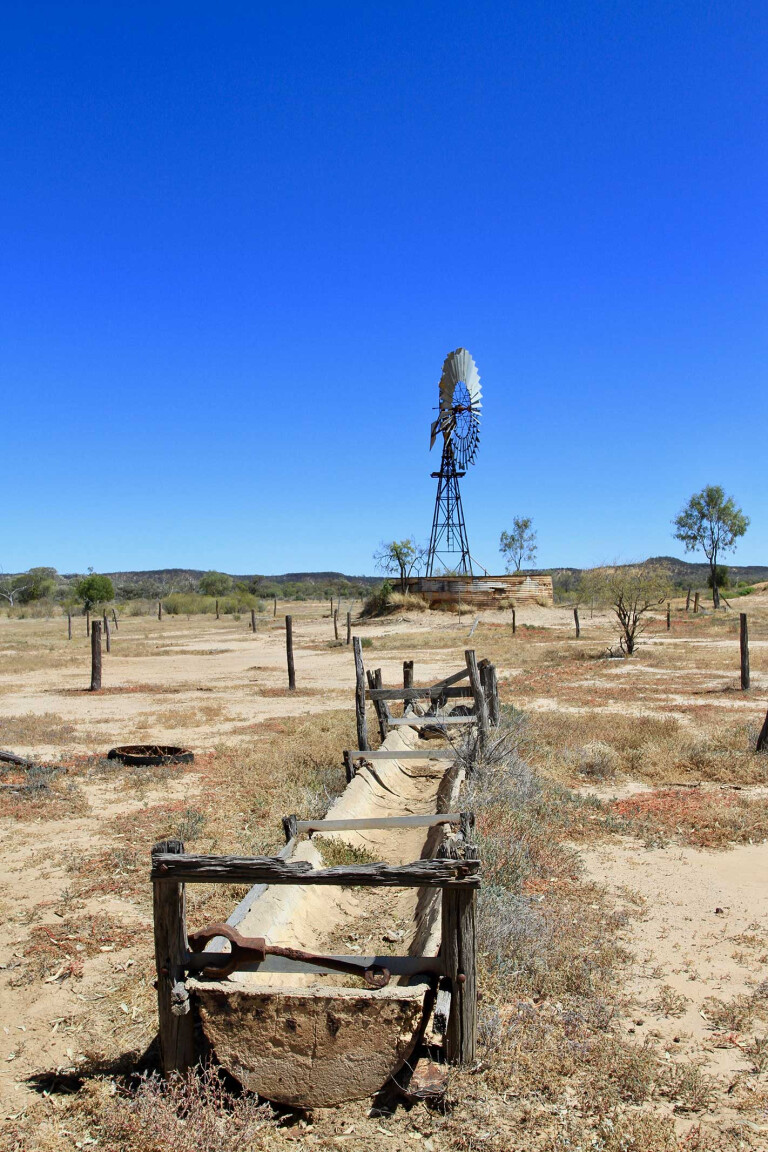
Today there are many relics around the park where it embraces part of the Gowan Ranges and neighbouring plateaus. From the park’s entrance it’s not far to the first set of ruins that include the windmill and tanks, old bores and heritage-listed stake fences. Monks Tank is the only designated camping area in the park and is a 23km drive across open Mitchell grass plains and through mulga woodlands on sandy tracks, best with a high-clearance 4x4.
Along the way, if you’ve got the time, take the turns and explore Old Idalia, where a slab hut once stood which was used as a remote mustering hut. Current reports told us it was still standing, but unfortunately there’s now only a pile of timber, corrugated iron and a few bits of rusty relics scattered on the site.
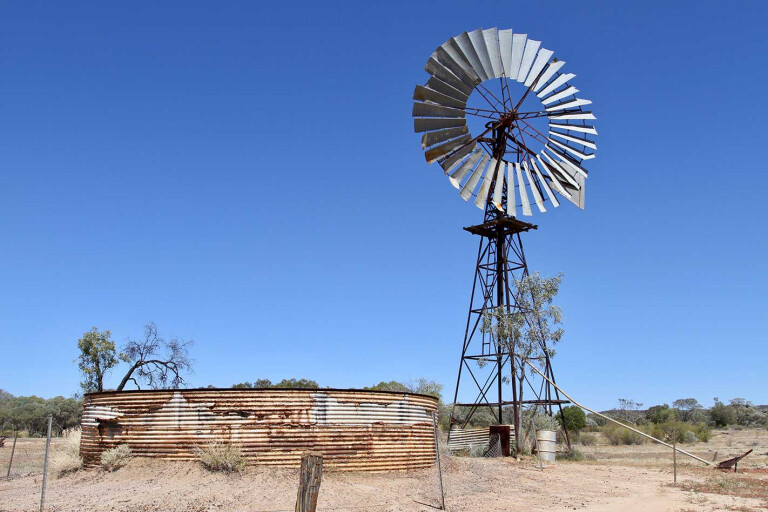
A walking trail behind the rubble leads to Wave Rock, where hundreds of years of weathering has worn away the soft sandstone rock to leave a 100m-long wave-shaped rock, which, for most part, looks like a surfing barrel about to break. For the surefooted, a wander up the trails to the top gives stunning views across the surrounding areas of the silver-leafed acacia trees.
Wildlife in the park includes birds and several species of wallabies; if you’re around during dusk you might see the endangered nail-tail wallaby that once over-populated this area until hunters nearly wiped them out prior to 1930. A nearby reserve has been set up to raise and monitor these animals.
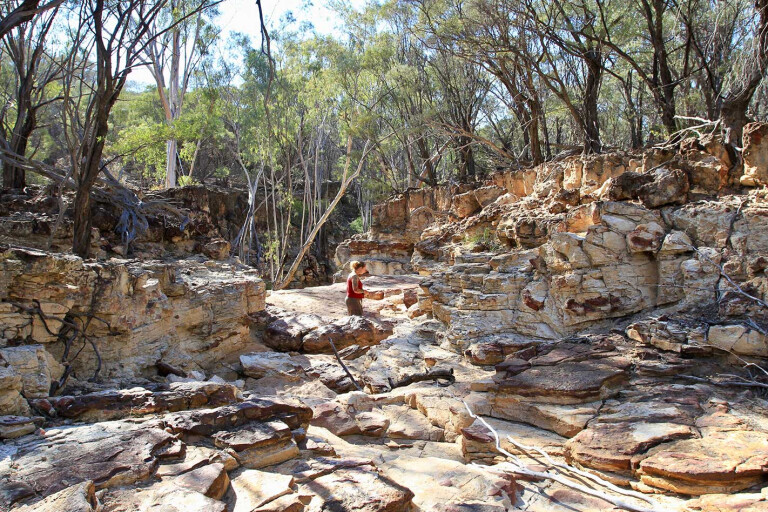
Reading the information boards, Queensland National Parks reports there are six different types of wallabies (or macropods) within Idalia, and they have adapted well to this area by not needing much water to survive. During drought they are not fussy when eating as they are happy to mix their diet between leaves, grass, bark and other animal droppings.
Monks Tank waterhole is very basic with no allocated camping areas, but it does have a decent long-drop dunny all within a thick mulga-wood forest, and it’s a great base to set-up for a few days to explore the other reaches of this remote park.
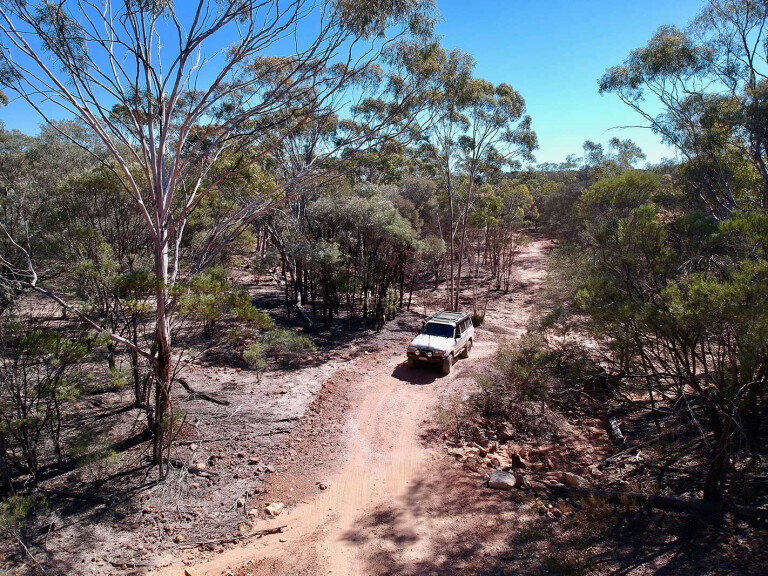
A short walk from camp are two waterholes that are a haven for what seems like dozens of varieties of birds, especially at sunrise and sunset. Bird lovers have reported an array of different parrots, finches, robins and bellbirds in the park. While not expert bird spotters, we did see about a dozen different types, as well as tiny marsupial footprints in the red sand around the camp each morning.
Heading out from Monks there are several areas to explore in the more remote regions of the park, and with only one road to follow, navigation is a no-brainer. About 10km away from Monks is Rainbow Gorge, where you can walk along an old creek that, thanks to erosion, displays a mass of different-coloured sandstone rock.
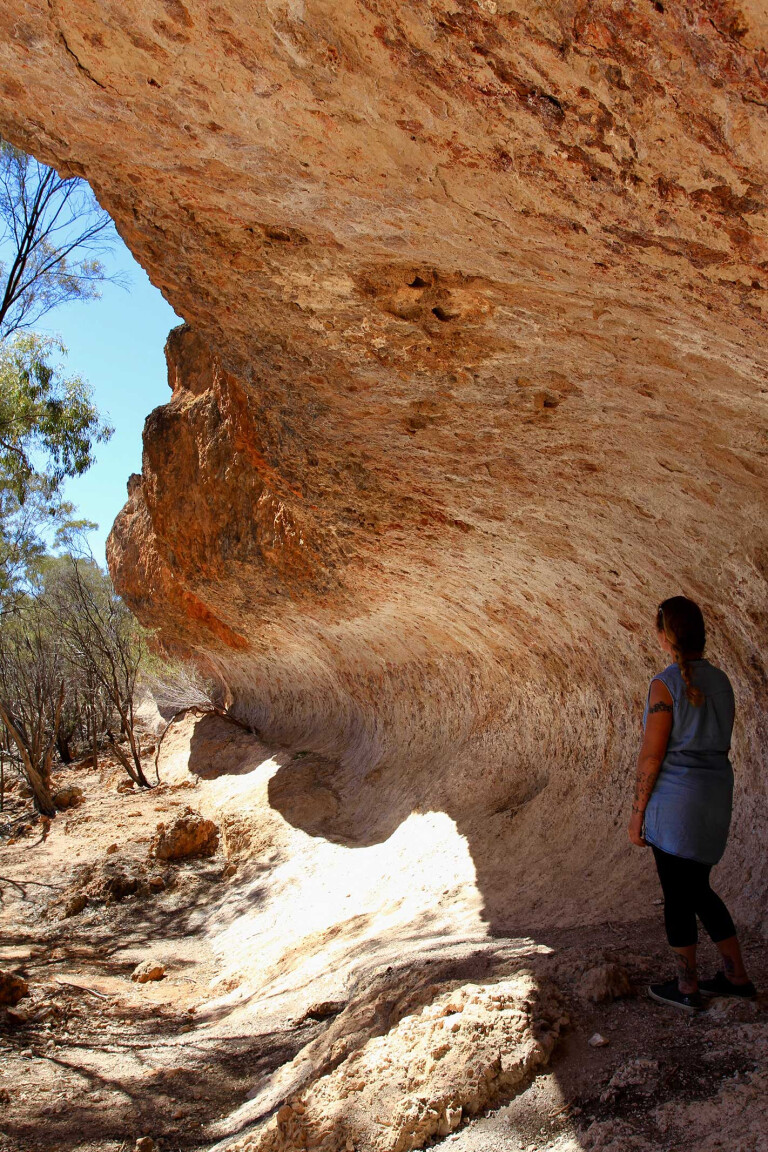
Water through here flows fast and furious, tumbling over huge drop-offs and gouging out more soft substance to expose hard rock. Even in dry times, the colours shine in different lights and it’s a nice surprise in this otherwise harsh environment.
The next stopover is Murphy’s Waterhole, where a narrow gorge surrounded by huge gums has been weathered away over time. We read that this spot is one of the farthermost inland places koalas can be spotted, but unfortunately we saw none during our gorge walk. Gnarly red gums give shade to the deep gorge, and in wet times it would certainly be a spectacular sight to watch the water flow gracefully through here.
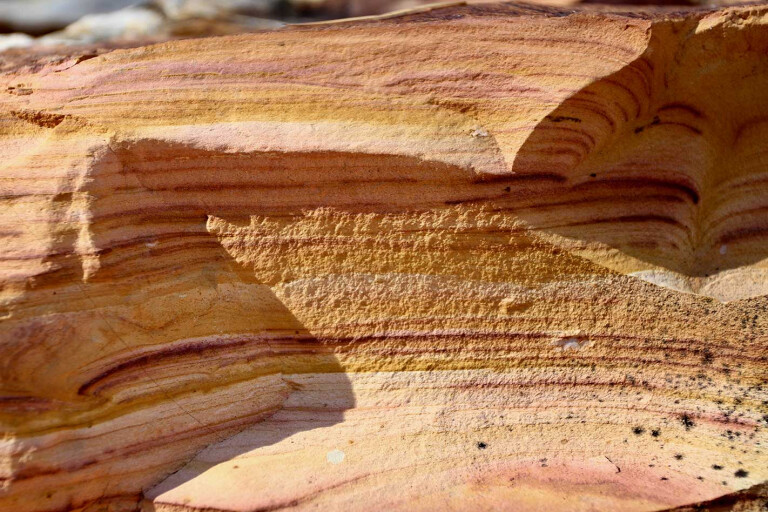
The roads change between long, sandy straights and rough little pockets of rocky undulating creek crossings, and considering where the park is located these variations are unexpected. About 12km away is Emmet Pocket, which is a favourite for photographers and hikers as the views across the mulga plains are to die for. The walk from the carpark to the cliff line is a difficult and rough three-hour hike, but is a must if you’ve already made the effort to explore the outer regions of the park.
Last but not least is Bullock Gorge, which is a 30-minute drive to the east from Emmet Pocket. Again this walk is only suitable for the experienced due to the steepness of the track along craggy escarpments, where different layers of the mulga trees and acacia woodlands look like a huge map in the distance. Some 100 million years ago this was the seabed of an ancient ocean.
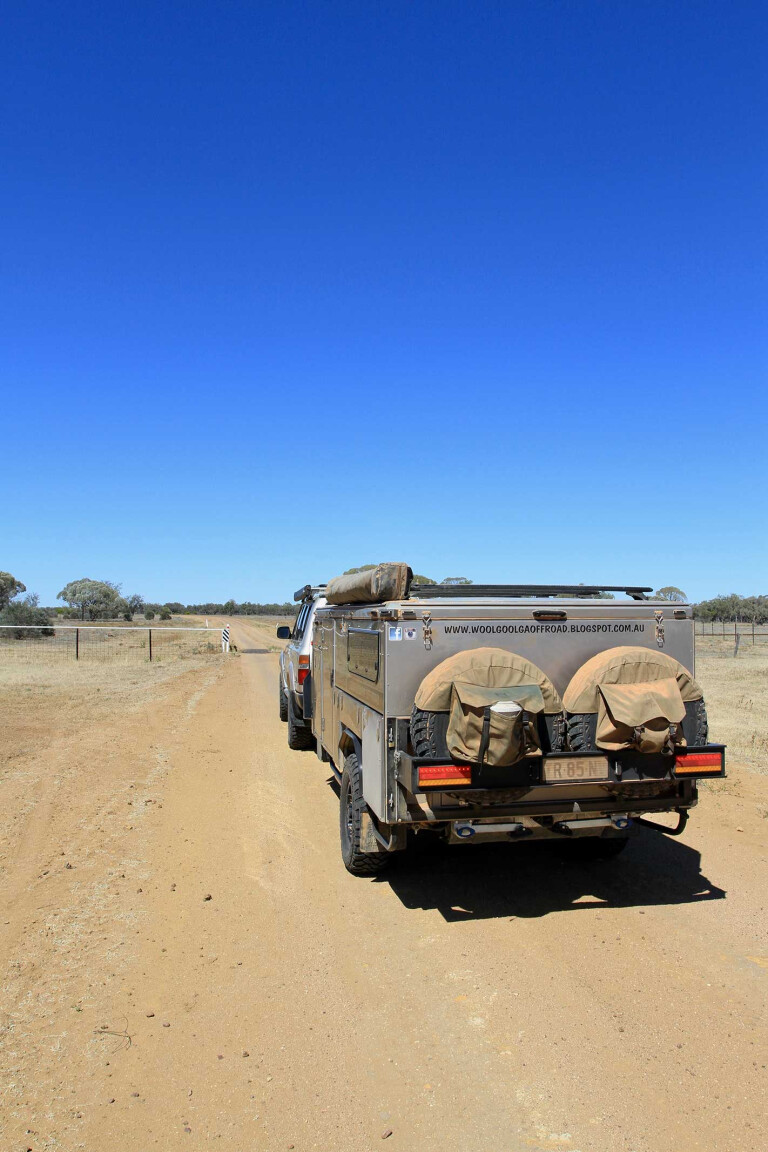
The remoteness of Idalia NP might not appeal to everyone, but for nature lovers it should be on their to-visit list. Despite its harshness, there are touches of delicate beauty where native fuchsia shrubs give a blush of crimson when in bloom and petite paper daisies flower at any sign of moisture in the air.
Queensland Parks allows mountain bike riding on designated trails within the area, but you should only cycle in the cooler months and carry plenty of water. We spent a few days here and saw no other souls, so you can’t depend on anyone else for help – Idalia is a seriously remote park. There are no bins and no drinking water; be on the lookout for any park warnings and don’t forget to carry plenty of fuel as the nearest servo is 115km away at Blackall.
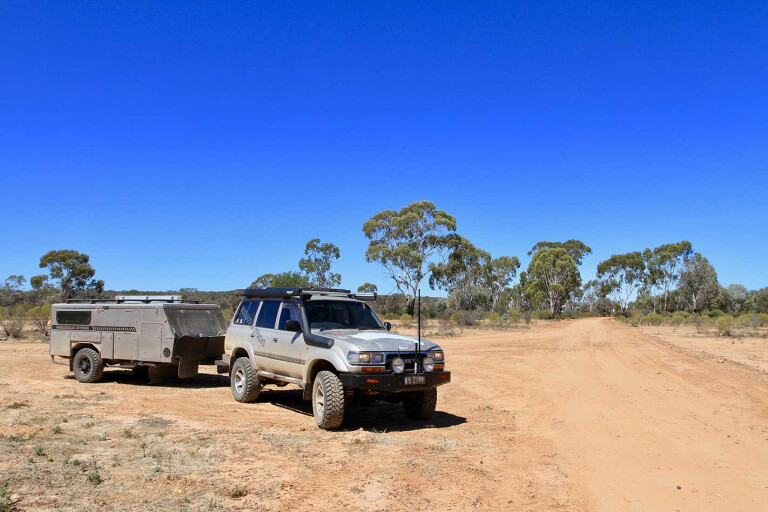
Exploring here in the cooler months between April and September will give you cool nights (and hopefully no fire ban) plus warm days to enjoy the area. Even though you probably won’t see another camper in Idalia for days, bookings must be made online before you head to the area, as mobile service is non-existent for many kilometres.
Idalia is the perfect place to capture the essence of harsh remoteness in central Queensland, but it’s still a fragile environment where we need to look after the history as well as its flora and fauna. It’s a place to get back to nature, whether that’s hiking, taking photos or just relaxing, and it really is a spot where you can savour the freedom of the outback.
Essential Travel Tips
Campsite bookings: https://parks.des.qld.gov.au/
Fuel: Blackall (115km away) has three service stations.
Maps: Hema ‘Outback Queensland’

COMMENTS